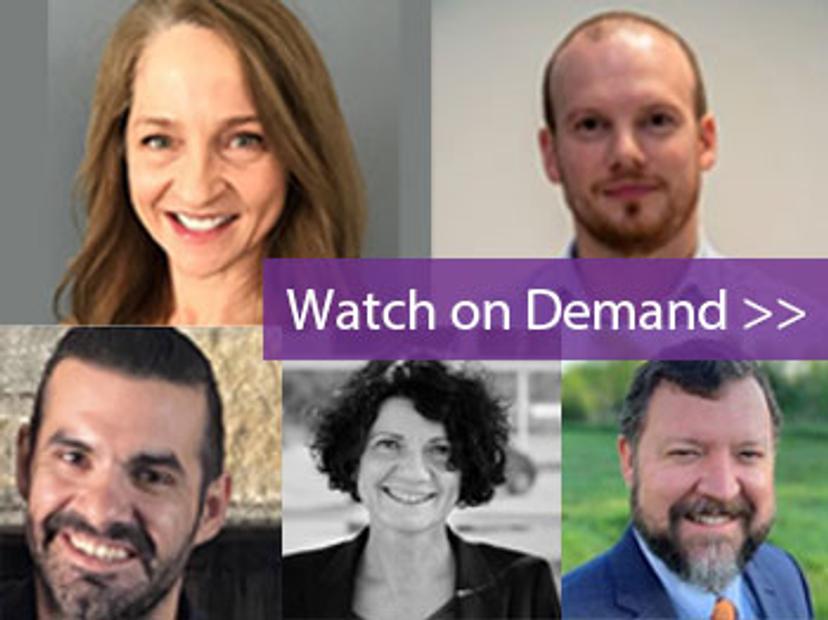Roundtable discussion: The key to running AOAC-OMA collaborative studies
Discover the latest from food safety experts on food matrices, method validation and key considerations when selecting a method
24 Jan 2022

Watch this on-demand SelectScience® roundtable discussion to explore the key successes and major outcomes of running AOAC-OMA collaborative studies. The lively discussion highlights how validated methods can impact food safety and reveals key considerations when selecting a method. During the debate, you’ll hear from representatives of all stakeholders involved in this method validation process as they share their keys for success and the major outcomes of such studies.
Participants include:
- Maria Nelson, Technical Consultant at AOAC International
- Ben Bastin, Associate Director at Q-Laboratories, an AOAC expert laboratory
- François Le Nestour, Head of the Microbiology Department of Microsept, a routine testing laboratory
- Matt Hahs, Global Product Manager at Thermo Fisher Scientific, a rapid method provider
- Moderator: Daniele Sohier, Global Scientific Affairs Sr Manager, at Thermo Scientific and Director of the AOAC Board
Read on for highlights from the Q&A discussion and register now to watch the webinar on-demand.
What criteria do you use when selecting someone to be a collaborator in one of your studies?
BB: We're always looking for other collaborators, especially those who produce valid results, because there are times that difficulties do arise, whether it be due to shipment or not following the process properly. We do like people to be at an ISO-17025-accredited laboratory, and the training is conducted with either myself or with the method developer for the alternative method, the rapid method, and the cultural method.
MN: I would like to add, from the AOAC standpoint, there are no specific requirements for a collaborating laboratory, however, we would like to have the labs be familiar with the reference methods. We want to make sure they have good lab techniques and are able to run the candidate method, as well. They also have to follow all the instructions exactly and start on the correct dates. It's very important for the study that everybody starts on the same date and that they don't deviate from the methods.
What will happen if the validated method is revised? How is that beneficial to the end user?
MN: When method developers update their methods, they are required to submit a modification application to the AOAC. This applies to the official methods of analysis and PTM (performance tested methods). The level of modification will depend on the change. For example, editorial changes are level 1 changes. Other types of changes, such as adding new matrices, are considered a minor change or a level 2 change. The expert review panel at AOAC will review the data and decide whether to include that into the method as a revision.
Changing primers and probes in your assay or adding something new, such as a new target to your PCR assay so that you have a multiplex, would be a major change and this requires another collaborative study.
Could you provide some more information regarding the countries involved in the AOAC's standard development and validation processes?
MN: I think that it's great to have international laboratories participate, and it's really important for the method developer where they want their methods to be used. If the method is international and not specific to one country, then we definitely want to have international laboratories participate.
Do I need to validate again if the method has been AOAC or ISO validated? What will I have to run for method verification?
BB: Typically, we will look at the scope and applicability of the method, and there may be some verification work required for certain products. We take it on a case-by-case basis, whether we work with our client or work with the method developer to see what supporting data they may have internally.
FN: When participating in a study where you are using a very challenging matrix, it can help you to visualize the future tests that you will have to perform in your labs. For example, for method verification, I consider ISO-16140 part 3, where you have to test a challenging matrix to prove that your method will be okay with the most difficult matrices you may encounter in your lab. Working with these kinds of challenging matrices, such as cocoa or cottage cheese, helps you to better plan future tests.
MH: This is a fairly common question that I get when working in partnership with labs and customers as they're going through this process. The concept of validation versus verification can be challenging, and I think that you need to partner with someone who understands what the requirements are and what the claim of the method is. That’s why we've developed the verification tools that help guide you through that process.
How does it feel to have successful OMA validation studies and methods in your portfolio?
MH: We are ecstatic. Especially if you put into context everything that we've been discussing; the robustness, the rigor around an OMA evaluation, and what we've been living through for the past 18 months with the pandemic. We did have some early conversations as to whether or not we pursue this at a time where we can’t get into labs and give in-person training. It was a risk for us to have embarked on this endeavor. But the robustness and the ease of use of the workflow permitted us to navigate these waters in a virtual environment. So, we are ecstatic to arrive at the end of this with as much success as we have seen, both with our expert lab and all the participating laboratories.
What are the take-home messages for our participants?
MN: We've been discussing the reproducibility and robustness of the method, and it all leads to the most important thing, which is the reliability of the method and how confident the end user is with their results. The AOAC OMA-approved methods are recognized in the U.S. Code of Federal Regulations for regulatory enforcement and have the highest level of defensibility. The methods can be used for dispute resolution as well, so there's a lot of confidence in that.
SelectScience runs 10+ webinars each month, discover more of our upcoming webinars>>
